Analytics
Integrations
Integrate With Ease,
Operate With Excellence.
You have a vision for your logistics operations, and we have the tools to help you realize it. Our integrations help you to collect and combine data from multiple platforms, automate and streamline your tasks, and generate valuable insights.

Snowflake
Enjoy a top-notch data warehouse that simplifies processing, data management, and reporting without any silos.
Power BI
Leverage reporting and analytics across platforms to make data-driven decisions that are accurate and operational.
Power Automate
Scale your business with customer growth without adding new costs by using automated processes.
Power Apps
Create low-code, customized solutions that are easy to test, deploy, and support.
Our logistics analytics integrations with other industry standard platforms are the ultimate way to enhance your logistics capabilities and outcomes. These integrations help you to integrate and exploit data from various platforms, simplify and upgrade your operations, and generate relevant insights.
Learn More About Our Integrations
Connect with any platform.
Our integrations enable you to access and apply data from various platforms, automate and enhance your processes, and generate valuable insights. You can also oversee and fine-tune your strategies, ensuring you attain your goals.

Tive
Monitor your shipments from pickup to delivery with IoT devices that track GPS location, temperature, and vibration.
Project44
Track independent contractors from pickup to delivery with the same precision as company drivers with a mobile application.


RMIS
Trust that every carrier vendor we vet meets our high standards for insurance, safety history, and suspicious behavior.
Truckstop
Source carriers with availability and capability to haul shipments while saving money.
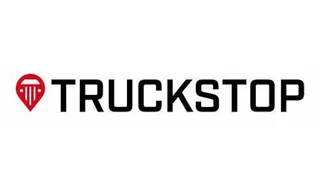
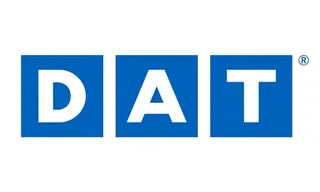
DAT
Find carriers with availability and capability to haul shipments while reducing costs.
NetSuite
Benefit from industry standard accounting that enables timely automated invoicing and vendor payment.
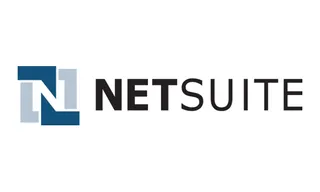
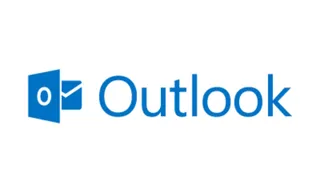
Outlook
Communicate with stakeholders smoothly.
SMS Texting
Stay in touch with carriers via text messaging while a shipment is in transit.


Macropoint
Track independent contractors from pickup to delivery with the same accuracy as company drivers with a mobile application.
TriumphPay
Pay carriers quickly to keep our brand strong, ensuring we have access to the best providers.

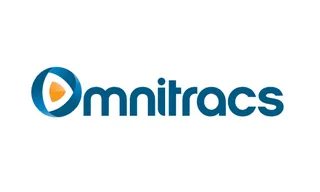
Omnitracs
Receive automated updates from a driver’s ELD while a shipment is in transit.
PeopleNet
Track independent contractors from pickup to delivery with the same precision as company drivers with a mobile application.
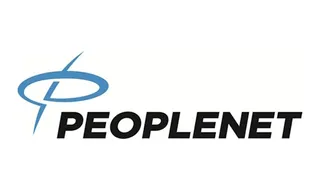

Issac
Follow independent contractors from pickup to delivery with the same accuracy as company drivers with a mobile application.
Geotab
Keep track of independent contractors from pickup to delivery with the same precision as company drivers with a mobile application.
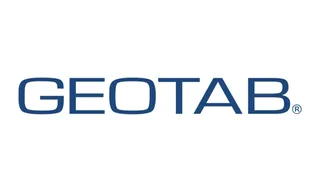
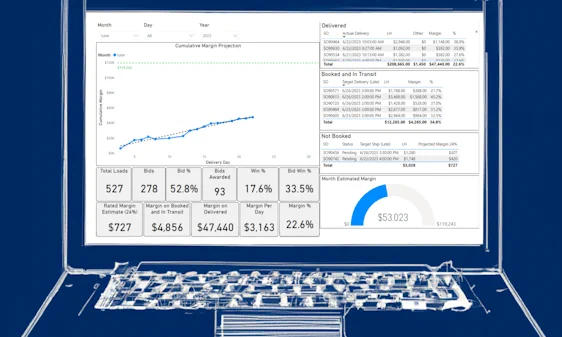
Custom Portal
Access websites built to our customers’ specifications that provide the relevant information to all stakeholders while maintaining our strict data security policies.
All trademarks, logos and brand names are the property of their respective owners. All company, product and service names used in this website are for identification purposes only. Use of these names,trademarks and brands does not imply endorsement.
Features
Data, Action,
Satisfaction.
Our analytics give you the tools to track, analyze, and enhance your logistics processes. Whether you need to reduce costs, increase efficiency, or expand your market reach, our analytics can help you achieve your goals.
Real-time Data Processing
Enable instant analysis of live data feeds, ensuring timely responses to changing conditions and enhancing operational agility.
Customizable Dashboards
Tailor-made dashboards for personalized user experience, allowing users to focus on specific metrics essential to their roles and objectives.
Intuitive User Interface
Provide a user-friendly interface for effortless navigation and data interpretation, ensuring accessibility for users with varying technical backgrounds.
Data Security Protocols
Implement robust encryption and access controls, safeguarding sensitive logistics data and instilling confidence in clients regarding data integrity and privacy.
Comprehensive Reporting Tools
Generate detailed and insightful reports, offering clear visualizations of key performance indicators and aiding strategic decision-making processes.
Mobile Accessibility
Enable users to access analytics on-the-go via mobile devices, ensuring flexibility and allowing critical decisions to be made remotely.
Collaborative Features
Facilitate collaboration among team members by allowing shared insights, annotations, and collaborative discussions, promoting teamwork and knowledge sharing.
Integration Capabilities
Seamlessly integrate with existing logistics systems and databases, ensuring smooth data flow and enabling comprehensive analytics across the supply chain.
Custom Data Solutions
Tailor data solutions specific to industry needs, ensuring analytics align perfectly with unique business requirements and challenges.
Dynamic Alerts System
Set up real-time alerts based on specific metrics, ensuring immediate notifications for critical aspects of logistics operations and enabling swift responses.
Custom Data Processing
Offer flexibility in data processing methods, allowing businesses to tailor algorithms and analytics approaches to their unique business goals and challenges.
Purpose
Plan Ahead,
Stay Ahead.
With our various logistics analytics report types, you can turn your data into actionable insights that help you optimize your operations, improve your quality, and increase your customer satisfaction. Whether you need to plan, monitor, or evaluate your logistics performance, we have the report with the right purpose for you.
Comprehensive Data Analysis
By using comprehensive data analysis, you can optimize your logistics operations, enhance your efficiency, cut your costs, and improve your customer service. Data-driven insights help you understand your performance, identify opportunities, and solve problems in your logistics processes.
Real-Time Monitoring
With real-time monitoring, you can gain instant visibility, spot issues, and make proactive decisions for your logistics operations. Real-time monitoring helps you keep track of your shipments, inventory, and resources, and alerts you of any deviations or disruptions in your logistics processes.
Customizable Dashboards
Customizable dashboards allow you to access and visualize key logistics data for informed decision-making. You can customize your dashboards to suit your preferences and needs, and display the metrics and indicators that matter to you. Customizable dashboards help you gain insights and clarity into your logistics operations.
Cost Efficiency Analysis
Cost efficiency analysis helps you discover cost-saving opportunities, negotiate better terms, and control your logistics spending. You can analyze your logistics costs and compare them with industry benchmarks, and identify areas where you can reduce or optimize your expenses. Cost efficiency analysis helps you manage your logistics budget and improve your profitability.
Supply Chain Visibility
Supply chain visibility enables you to track, trace, and oversee your supply chain for better management. You can monitor the status and location of your goods, materials, and vehicles throughout your supply chain, and ensure their quality and safety. Supply chain visibility helps you improve your delivery performance and customer satisfaction.
Customer Satisfaction Metrics
Customer satisfaction metrics help you evaluate, analyze, and boost your service quality to increase customer satisfaction and loyalty. You can measure how satisfied your customers are with your logistics services, and identify the factors that influence their satisfaction. Customer satisfaction metrics help you improve your service standards and retain your customers.
Dynamic Reporting
Dynamic reporting provides you with real-time, customizable, and actionable insights for informed decision-making in logistics. You can generate reports on various aspects of your logistics operations, such as performance, efficiency, quality, and costs, and tailor them to your specific needs and goals. Dynamic reporting helps you gain knowledge and understanding of your logistics processes.
Integration Capabilities
Integration capabilities allow you to connect various systems and data sources for smooth logistics operations and decision-making. You can integrate your logistics systems with other systems, such as ERP, CRM, and accounting, and share data and information across them. Integration capabilities help you streamline your workflows and improve your data quality and accuracy.
User-Friendly Interface
User-friendly interface simplifies your user interaction, increases your functionality, and improves your accessibility for efficient logistics management. You can interact with the system easily and intuitively, and access more functionalities and features that enhance your logistics operations. User-friendly interface helps you save time and effort and increase your productivity and convenience.
Scalability
Scalability enables you to grow and adapt to changing logistics needs and demands flexibly. You can scale up or down your logistics operations and resources as per your business requirements, and adjust to market fluctuations and customer expectations. Scalability helps you maintain your competitiveness and resilience in the logistics industry.
Collaborative Tools
Collaborative tools facilitate communication, coordination, and cooperation among your supply chain partners. You can communicate with your suppliers, carriers, customers, and other stakeholders, and coordinate your logistics activities and plans with them. Collaborative tools help you build trust and relationships with your supply chain partners and improve your collaboration and performance.
Mobile Accessibility
Mobile accessibility creates on-the-go access to critical logistics data and functionalities for remote management. You can access your logistics system from your mobile devices, such as smartphones and tablets, and perform various tasks and actions from anywhere and anytime. Mobile accessibility helps you stay connected and informed of your logistics operations and respond to any issues or opportunities quickly and effectively.
Data Security
Data security protects your sensitive logistics data from unauthorized access, breaches and cyber threats. You can secure your logistics data with encryption, authentication, and backup, and prevent any data loss or leakage. Data security helps you comply with data privacy and security regulations and safeguard your reputation and credibility.
Carbon Emission Tracking
Carbon emission tracking helps you monitor and reduce your carbon emissions to support sustainability and environmental responsibility in logistics. You can track your carbon footprint and the environmental impact of your logistics operations, and implement measures to reduce your emissions and waste. Carbon emission tracking helps you contribute to the global efforts to combat climate change and enhance your corporate social responsibility.
Dynamic Pricing Strategies
Dynamic pricing strategies help you optimize your pricing based on real-time market conditions and demand for cost-effective solutions. You can adjust your pricing according to the supply and demand of your logistics services, and the competitive landscape of the logistics industry. Dynamic pricing strategies help you maximize your revenue and profitability and attract and retain your customers.
Cross-Channel Integration
Cross-channel integration helps you link and coordinate your logistics operations across multiple communications platforms. You can integrate your logistics operations with various channels, such as web, mobile, social media, and email, and provide consistent and seamless service to your customers. Cross-channel integration helps you enhance your customer experience and satisfaction and increase your customer loyalty and retention.
AI-Powered Insights
AI-powered insights help you leverage AI for actionable data-driven insights, enhancing your logistics processes and decision-making. You can use AI to analyze your logistics data and generate insights that help you optimize your logistics operations, such as demand forecasting, route optimization, inventory management, and anomaly detection. AI-powered insights help you improve your logistics efficiency, quality, and performance.
Customer Segmentation
Customer segmentation helps you adapt your strategies to different customer groups based on their preferences and behaviors. You can segment your customers according to various criteria, such as demographics, geography, psychographics, and behavior, and tailor your logistics services and marketing to each segment. Customer segmentation helps you increase your customer satisfaction and loyalty and differentiate yourself from your competitors.
Incident Response Analytics
Incident response analytics help you detect, analyze, and respond to logistics incidents and disruptions promptly and effectively. You can use incident response analytics to identify and diagnose the root causes and impacts of any incidents or disruptions in your logistics operations, and implement corrective and preventive actions to resolve them. Incident response analytics help you minimize your risks and losses and maintain your service quality and reliability.
Automated Performance Alerts
Automated performance alerts provide you with real-time notification of performance deviations for proactive issue resolution. You can set up performance alerts for various metrics and indicators of your logistics operations, such as delivery time, service level, and customer feedback, and receive alerts when they deviate from your targets or expectations. Automated performance alerts help you monitor your performance and address any issues or opportunities in a timely manner.
Customer Retention Analytics
Customer retention analytics help you find factors that should shape your customer retention strategies. You can use customer retention analytics to understand why your customers stay or leave, and what factors influence their loyalty and satisfaction. Customer retention analytics help you design and implement effective customer retention strategies and increase your customer lifetime value.
Types
More Options,
More Insights.
With our logistics analytics reporting types, you can access the data you need to make smart decisions. You are able to choose from different formats and layouts that suit your preferences and goals. You can also compare and contrast your metrics across different time periods and locations.
Shipment Tracking Reports
Real-time updates on shipment status are provided to customers, enhancing their trust and satisfaction.
Supplier Performance Reports
Supplier reliability, quality, and efficiency are measured and improved, resulting in better partnerships and outcomes.
Carrier Performance Reports
Carrier reliability, on-time delivery, and cost efficiency are assessed, enabling informed carrier selection and evaluation.
Learn More About Our Types of Analytics
Create Your Report,
Craft Your Future.
We know that every logistics operation is unique. That’s why we don’t offer a one-size-fits-all approach to analytics. Our reporting types are flexible and adaptable to your specific needs and objectives.
Customer Satisfaction Reports
Customer feedback is gathered and analyzed, leading to service quality enhancement and relationship improvement.
Transportation Cost Analysis Reports
Spending patterns are reviewed and cost-saving opportunities are identified, helping to optimize expenses and budget.
Root Cause Analysis Reports
Underlying causes of issues or problems are discovered and solved, facilitating continuous improvement and learning.
Market Trends and Analysis Reports
Market dynamics are learned and adapted to, supporting strategic decision-making and competitive advantage.
Network Optimization Reports
Efficiencies, cost savings, and improved service are demonstrated by optimizing the network design and performance.
Real-time Monitoring Reports
Operations are tracked and issues are spotted in real time, allowing for proactive and timely decision-making and action.
Customer Segmentation Reports
Customers are grouped based on demographics, preferences, and behavior, enabling targeted and customized marketing and service.
Lost Sales Analysis Reports
Missed sales opportunities are pinpointed and optimized, helping to balance inventory and demand and increase sales.
Emergency Response & Contingency Reports
Crises are prepared for and handled effectively, ensuring financial continuity and resilience in the face of uncertainty and disruption.
Transportation Network Visualization Reports
Routes and hubs are visualized for better logistics planning, improving network design and performance.
Customer Segmentation and Profiling Reports
Logistics services and strategies are personalized for each customer segment and profile, delivering tailored and differentiated service and value.
Transportation Resource Optimization Reports
Transportation assets, personnel, and routes are upgraded for efficiency and cost saving, maximizing resource utilization and productivity.
Carrier Cost Comparison Reports
Carrier pricing is compared and cost-efficient shipping options are chosen, optimizing shipping costs and service quality.
Transportation Mode Efficiency Reports
Modes are examined for cost-effectiveness in logistics operations, selecting the best mode for each shipment and route.
Order-to-Delivery Time Reports
The entire order-to-delivery process is streamlined and optimized for efficiency, reducing delays and errors and increasing customer satisfaction.
Capacity Utilization Reports
Resource allocation is optimized by tracking capacity utilization levels, avoiding underutilization or overutilization of resources and ensuring optimal performance.
Demand Variability Reports
Demand fluctuations are studied and inventory and supply chain strategies are adjusted accordingly, managing demand uncertainty and variability.
Freight Cost Allocation Reports
Freight costs are distributed accurately and cost visibility and control are enhanced, ensuring fair and transparent cost allocation and reporting.
Freight Audit and Payment Reports
Carrier invoices are checked and confirmed for accuracy and timeliness, ensuring correct and prompt payment and avoiding disputes and errors.
Transportation Budget Variance Reports
Discrepancies in budget allocations are investigated and explained, identifying and resolving the causes of budget variance and improving budget planning and control.
Customer Churn Analysis Reports
Customer turnover is reduced and customer retention is increased, identifying and addressing the reasons for customer churn and enhancing customer loyalty and value.
Freight Rate Benchmarking Reports
Carriers are negotiated and selected with cost-effective rates, supporting cost-efficient and quality shipping and carrier relationships.
Sustainability Impact Reports
Environmental impact and progress on initiatives are reported, measuring and communicating sustainability performance and goals.
Technologies
Insights That Matter.
Results That Deliver.
How do you make your logistics operations more efficient, effective, and responsive? By using our logistics analytics technology platform, the ultimate tool for supply chain optimization. Our platform harnesses the power of big data and cloud computing to provide you with real-time visibility and control over your logistics processes.
Big Data Analytics
With big data technologies like Hadoop and Spark, you can process large datasets and discover complex patterns and trends in your logistics data, giving you an edge over your competitors.
AI Technologies
AI technologies, including natural language processing and neural networks, enable you to automate processes, forecast outcomes, and extract insights from unstructured data, boosting your productivity and performance.
Data Warehousing
Data warehousing solutions like Amazon Redshift, Google BigQuery, and Snowflake let you store and manage large volumes of structured and unstructured data, allowing you to query and analyze data faster and easier
Internet of Things (IoT)
IoT devices and sensors give you real-time data on shipments, vehicle conditions, and warehouse operations, improving your visibility and helping you make informed decisions.
Geographic Information Systems (GIS)
GIS technologies help you visualize spatial data, so you can optimize routes, plan warehouse locations, and study geographic patterns for better logistics planning.
Cloud Computing
Cloud platforms like AWS, Azure, and Google Cloud offer you scalable computing resources, so you can process and analyze data without investing in costly infrastructure.
Robotic Process Automation (RPA)
RPA simplifies repetitive tasks. Capabilities provided by Power Automate, UI Path, and others make activities like data entry and invoice processing more efficient and accurate, saving you time and money in logistics operations.
Mobile Applications
Mobile apps like Project44 and Macropoint enable you to access real-time data, so you can track shipments, update inventory, and communicate with team members anytime and anywhere.
Advanced Analytics Platforms
Advanced analytics platforms like Tableau, Power BI, and DOMO equip you with interactive data visualization and business intelligence tools, so you can create insightful dashboards and reports that showcase your achievements and goals.
Natural Language Processing (NLP)
NLP technologies, including Chat GPT, Anthropic, and LLaMA, help you process and understand human language, so you can use chatbots and voice assistants to get real-time support and insights from your logistics data.
Fleet Management Software
Fleet management solutions like Geotab help you utilize GPS tracking, telematics, and analytics to optimize routes, monitor vehicle health, and improve driver behavior, lowering your fuel consumption and maintenance costs.
Carrier Monitoring Software
By tracking carrier performance through RMIS, Carrier 411, Carrier Assure, and others, you can enhance your operations, reduce claims, and increase transparency in the supply chain, leading to happier customers and smarter cost management.
Data Sources
More Data, More Insights,
More Solutions.
By using a lot of different data sources for the logistics analytics, you can achieve your goals and vision for exactly how you want your logistics operations to run. Our logistics analytics solutions are built to use data from various sources to align your strategy, operations, and culture.
Financial Data
Financial data provides valuable insights into cost, performance, budgeting, pricing, profitability, and risk management.
Supplier Performance Data
KODIS uses supplier performance data to assess, monitor, and improve supplier performance in relation to on-time delivery, cost analysis, lead-time analysis, contract negotiations, and Key Performance Indicators.
Compliance & Safety Records
KODIS uses this data to avoid costly fines and penalties, reduce the likelihood of accidents, identify areas of improvement, lower insurance premiums, and improve supply chain resilience.
Learn More About Data Types
Data Variety. Logistics Quality.
By using a lot of different data sources for the logistics analytics, you can improve your flexibility and scalability. You can use data from various sources to adapt to changing demands, overcome challenges, and seize opportunities. This can help you respond to customer requests, mitigate risks, and exploit trends.
Customer Relationship Management (CRM) Systems
This data helps identify customer segmentation, improve demand forecasting, determine pricing structures, prevent customer churn, and establish KPIs related to customer relationships.
Geospatial Data
GPS and geospatial data enable real-time tracking of vehicles and shipments, allowing logistics managers to monitor progress and make adjustments.
Third-Party Logistics (3PL) Provider Data
KODIS leverages this data to optimize our supply chain operations, reduce costs, enhance customer service, and make data-driven decisions.
Regulatory Compliance Data
This data ensures that logistics operations meet legal and regulatory requirements, reduces the risk of penalties or disruptions, and contributes to the overall efficiency and reliability of the supply chain.
Customer Returns Data
Provides insights into customer satisfaction, product quality, and operational efficiency.
Enterprise Resource Planning (ERP) Systems
Serve as the backbone of our logistics technology-enabled analytics by providing a comprehensive view of supply chain data and operations.
Transportation Management Systems (TMS)
KODIS uses a TMS to aggregate data, generate KPIs for cost saving strategies, gain real-time visibility into shipment status and location, negotiate rates with carriers, monitor compliance, inform sustainability initiatives, and improve customer service.
Telematics and GPS Devices
These tools provide real-time data and insights to optimize transportation, improve safety, and drive supply chain efficiency.
IoT Sensors
These sensors play a pivotal role because they not only provide real-time tracking and visibility, but they also monitor temperature, humidity, vibration, and unauthorized access.
Supplier and Vendor Data
Supports decision-making, risk management, quality control, and overall supply chain efficiency.
Historical Shipment Data
Used to forecast demand, evaluate service levels and manage customer expectations, assess carrier performance and cost, evaluate customer satisfaction and loyalty, and inform mitigation strategies and contingency planning.
Customer Feedback and Surveys
Used in customer satisfaction assessments, service quality evaluations, issue identification, root cause analysis, KPI definition, productivity improvement, communication enhancement, and competitive analysis.
Government Databases
Provide insight into safety standards, environmental requirements, and trade sanctions; offer economic indicators to help us make informed decisions; help us to assess road safety and risks; provide insight into market access and barriers.
Market Research Reports
Logistics professionals can make informed decisions, improve forecasting accuracy, assess competitive positioning, and optimize supply chain strategies in alignment with market dynamics.
Social Media and Web Data
Provides insight into demand, customer engagement, brand messaging, competitive strategy and market positioning, supply chain disruptions, crisis management, and supplier reputation and performance.
Sensor Data from Vehicles
Enables real-time tracking and visibility, as well as maintenance needs, accidents, incidents, and any resulting needs.
Benefits
Data-driven Logistics.
Results-oriented Solutions.

You know how important logistics are for your success. That’s why you need a logistics partner that uses analytics to help you achieve your goals. Our analytics can help you streamline your processes, increase your efficiency, and reduce your costs.
Data Is The Key,
Data-driven analytics enables you to make informed and strategic decisions that can improve your logistics efficiency, effectiveness, and profitability.
Actionable Insights
You can make smart and valuable choices with practical information. This will help you optimize your performance and outcomes.
Operational Efficiency
You can get more done with less effort or resources. This will help you save time and money and improve your efficiency.
Real-time Visibility
You can access up-to-date and reliable information and data anytime. This will help you stay informed and prepared for any situation.
Cost Reduction
You can reduce your expenses and increase your profits by lowering your operational costs. This will help you improve your financial health and sustainability.
Analytics Is The Door.
Logistics analytics supports your company’s continuous improvement, learning, and innovation. By using data to evaluate your results, identify your gaps, and implement your solutions, you can constantly improve your performance and quality.
Customer Satisfaction
You can delight your customers and make them happy with your product or service. This will help you increase your customer satisfaction and retention.
Enhanced Collaboration
You can boost your productivity by working and communicating better with others. This will help you foster a positive and collaborative work environment.
Reduced Downtime
You can avoid downtime and keep your equipment, systems, or processes running smoothly. This will help you prevent disruptions and losses and maintain your quality standards.
Customer Retention
You can retain your customers and earn their loyalty by maintaining your relationships. This will help you build trust and reputation and generate repeat business.
Scalability
You can change and grow with the times and meet your evolving needs. This will help you stay competitive and relevant and seize new opportunities.
Data Security
You can secure your data from breaches, threats, and unauthorized access. This will help you protect your privacy and integrity and comply with regulations.
Competitive Advantage
You can stand out from the competition and achieve your goals with a unique edge. This will help you differentiate yourself and create value for your customers.
Supply Chain Transparency
You can track and monitor your supply chain processes, partners, and activities for transparency. This will help you ensure accountability and quality and optimize your operations.
Strategic Partnerships
You can partner with others and work towards common strategic goals. This will help you leverage synergies and resources and create win-win situations.
Have questions?
Just ask.
At KODIS, we know that the logistics industry can be complex and challenging to navigate. That’s why we’re here to guide you every step of the way.

Organizing a fragmented market.
Whether you’re looking for efficient freight management, streamlined supply chain solutions, or transparent reporting, we’ve got you covered.

Optimizing your operations.
We specialize in understanding the intricate world of logistics, offering comprehensive solutions tailored to your business.

Your trusted logistics advisor.
We’re committed to delivering efficiency, transparency, and reliability in all aspects of logistics.






